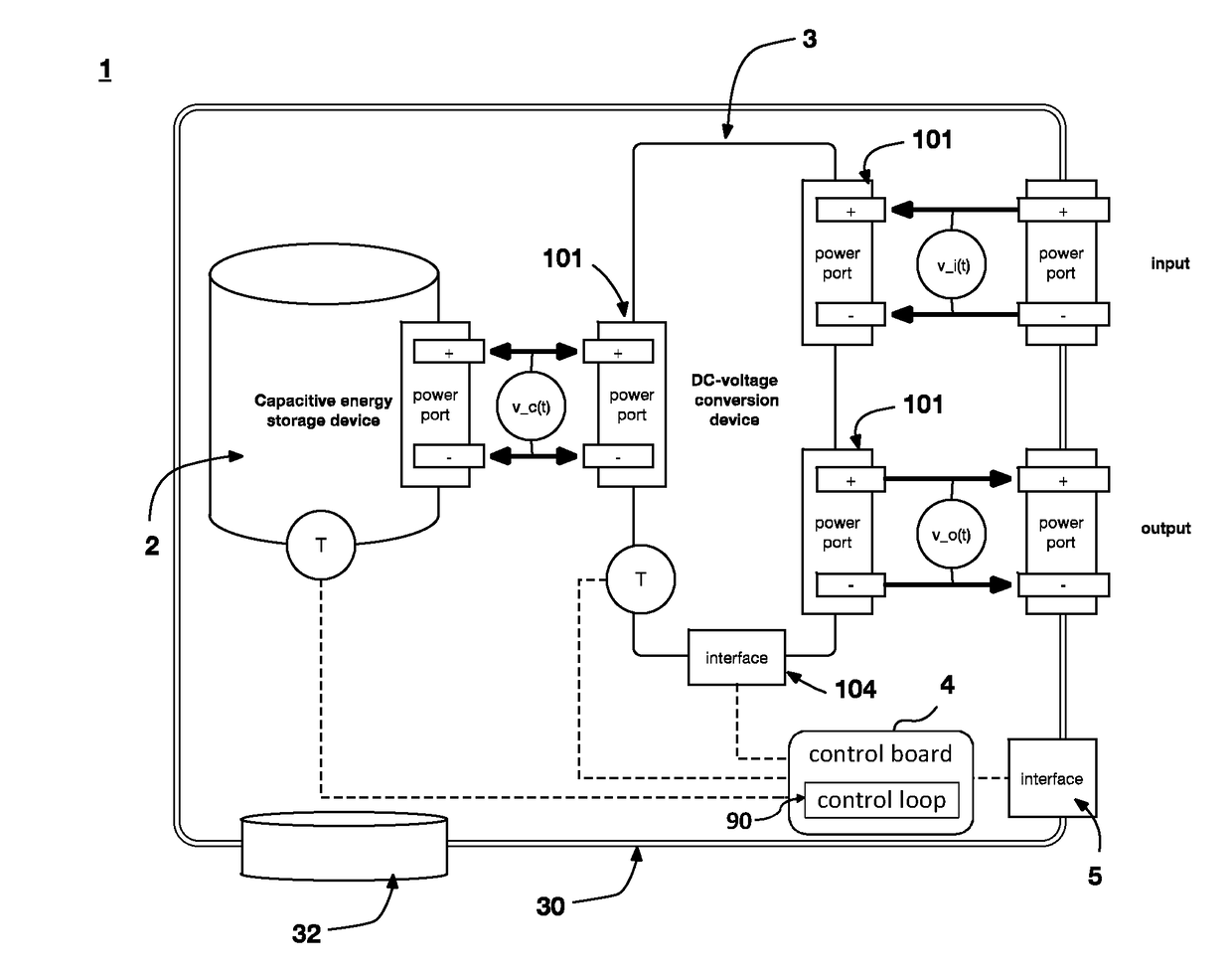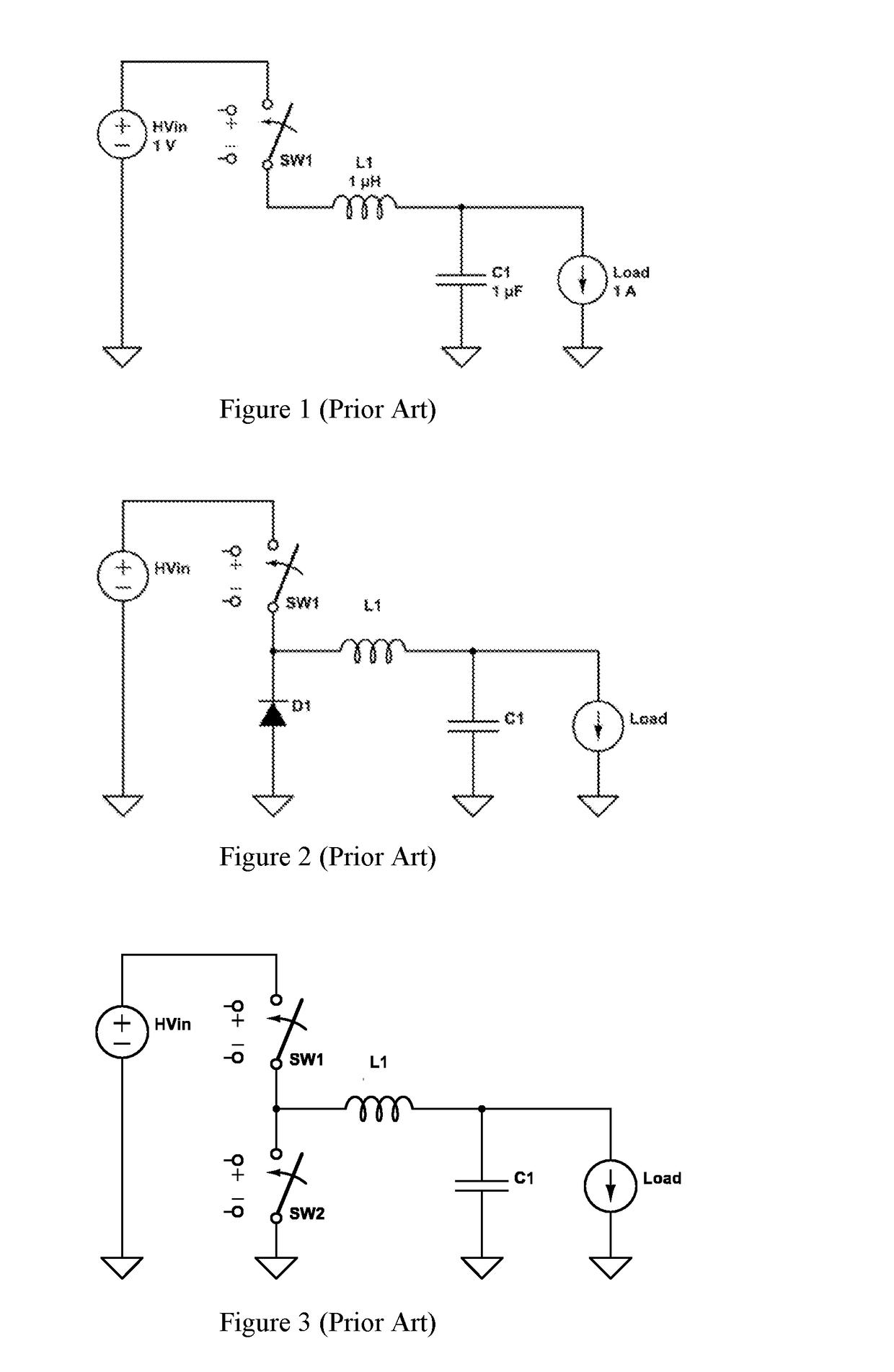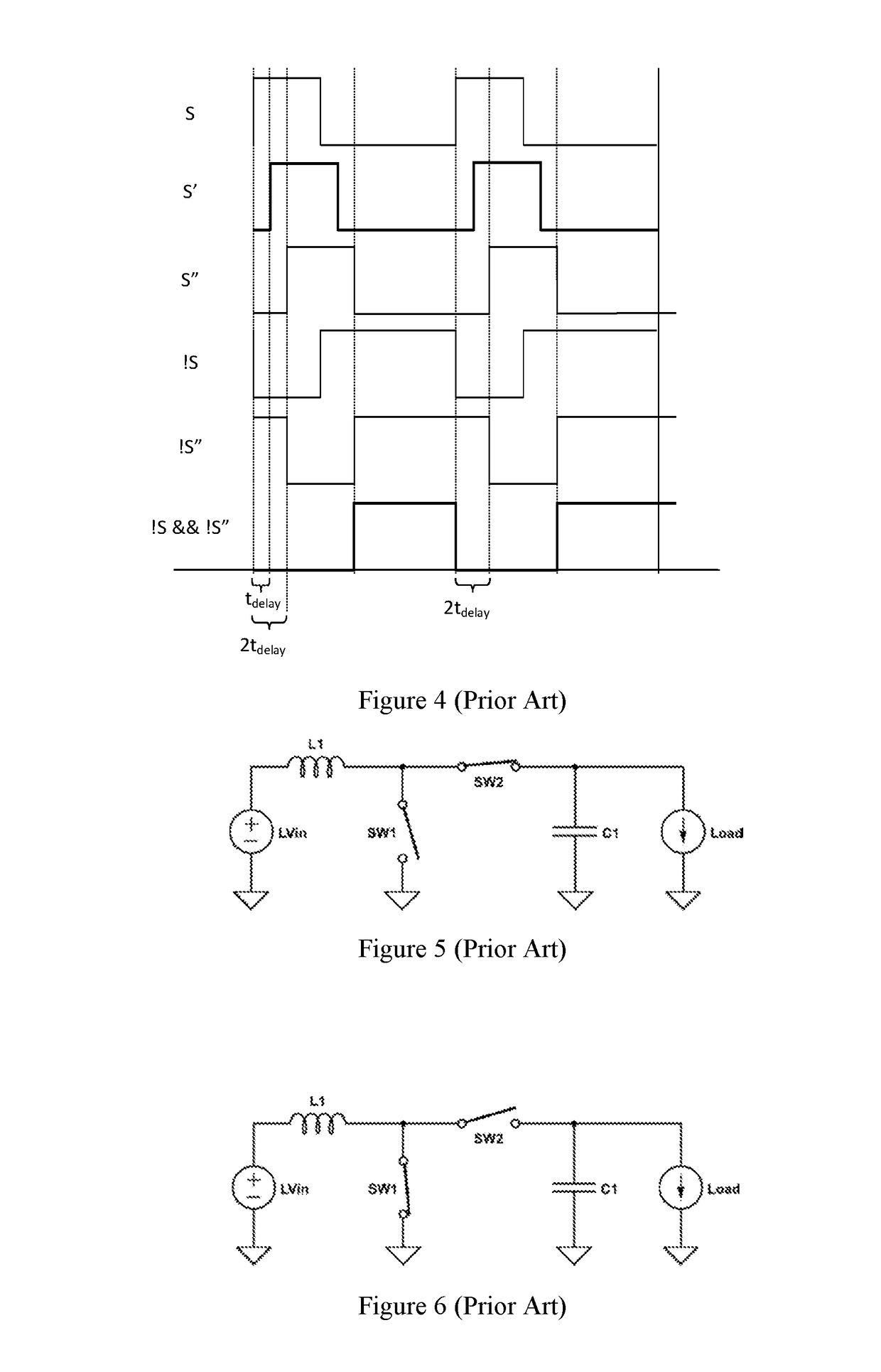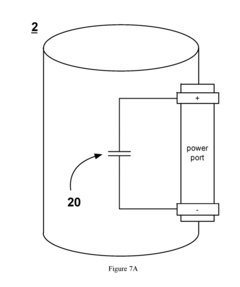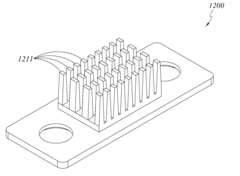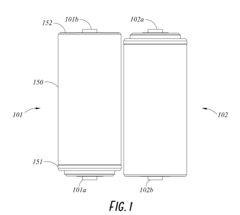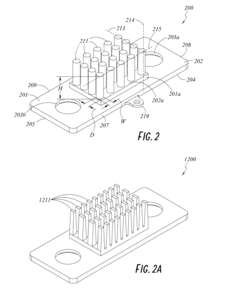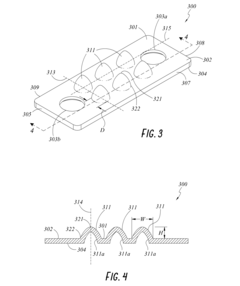Quantum Interconnects: Assessing Their Role in Energy Storage
SEP 29, 20259 MIN READ
Generate Your Research Report Instantly with AI Agent
Patsnap Eureka helps you evaluate technical feasibility & market potential.
Quantum Interconnect Technology Background and Objectives
Quantum interconnects represent a revolutionary frontier in the field of quantum technologies, bridging the gap between isolated quantum systems to create integrated quantum networks. The concept emerged in the early 2000s as researchers recognized the limitations of standalone quantum systems and the need for coherent information transfer between quantum nodes. Over the past two decades, quantum interconnect technology has evolved from theoretical frameworks to experimental demonstrations, with significant acceleration in development occurring since 2015.
The evolution of quantum interconnects has been driven by advances in quantum information science, photonics, and materials engineering. Initially focused on optical interconnects for quantum communication, the field has expanded to include solid-state interconnects, superconducting circuits, and hybrid systems that combine different quantum platforms. This technological progression has been marked by increasing coherence times, fidelity of quantum state transfer, and scalability of interconnect architectures.
In the context of energy storage, quantum interconnects present a paradigm shift in how we conceptualize energy management systems. Traditional energy storage technologies operate within classical physics constraints, but quantum interconnects offer potential pathways to harness quantum effects for enhanced energy transfer, storage, and conversion processes. The intersection of quantum interconnects with energy storage represents an emerging research domain with transformative potential for next-generation energy systems.
The primary objectives of quantum interconnect technology in energy storage applications include developing quantum-enhanced interfaces between different energy storage mediums, creating coherent networks of quantum energy storage units, and establishing protocols for quantum-secured energy distribution. These objectives align with broader goals of increasing energy density, improving charge/discharge efficiencies, and reducing energy losses in storage systems.
Current research aims to demonstrate proof-of-concept quantum interconnect implementations that can maintain quantum coherence while facilitating energy transfer across different physical platforms. Long-term goals include the development of scalable quantum interconnect architectures that can be integrated with conventional energy infrastructure, potentially revolutionizing grid-scale energy storage and distribution.
The technical trajectory suggests convergence toward hybrid quantum systems that leverage the strengths of different quantum technologies while mitigating their individual limitations. As quantum interconnect technology matures, we anticipate increasing focus on practical applications that can address real-world energy challenges, including renewable energy integration, demand response management, and resilient energy networks.
The evolution of quantum interconnects has been driven by advances in quantum information science, photonics, and materials engineering. Initially focused on optical interconnects for quantum communication, the field has expanded to include solid-state interconnects, superconducting circuits, and hybrid systems that combine different quantum platforms. This technological progression has been marked by increasing coherence times, fidelity of quantum state transfer, and scalability of interconnect architectures.
In the context of energy storage, quantum interconnects present a paradigm shift in how we conceptualize energy management systems. Traditional energy storage technologies operate within classical physics constraints, but quantum interconnects offer potential pathways to harness quantum effects for enhanced energy transfer, storage, and conversion processes. The intersection of quantum interconnects with energy storage represents an emerging research domain with transformative potential for next-generation energy systems.
The primary objectives of quantum interconnect technology in energy storage applications include developing quantum-enhanced interfaces between different energy storage mediums, creating coherent networks of quantum energy storage units, and establishing protocols for quantum-secured energy distribution. These objectives align with broader goals of increasing energy density, improving charge/discharge efficiencies, and reducing energy losses in storage systems.
Current research aims to demonstrate proof-of-concept quantum interconnect implementations that can maintain quantum coherence while facilitating energy transfer across different physical platforms. Long-term goals include the development of scalable quantum interconnect architectures that can be integrated with conventional energy infrastructure, potentially revolutionizing grid-scale energy storage and distribution.
The technical trajectory suggests convergence toward hybrid quantum systems that leverage the strengths of different quantum technologies while mitigating their individual limitations. As quantum interconnect technology matures, we anticipate increasing focus on practical applications that can address real-world energy challenges, including renewable energy integration, demand response management, and resilient energy networks.
Energy Storage Market Demand Analysis
The global energy storage market is experiencing unprecedented growth, driven by the increasing integration of renewable energy sources into power grids worldwide. Current market valuations place the energy storage sector at approximately $188 billion in 2023, with projections indicating a compound annual growth rate of 8.2% through 2030. This growth trajectory is particularly significant as nations worldwide commit to carbon neutrality targets, necessitating robust energy storage solutions to manage intermittent renewable energy generation.
Quantum interconnects represent a potentially transformative technology within this expanding market. Traditional energy storage systems face limitations in efficiency, capacity, and response time. The market increasingly demands solutions that can provide higher energy density, faster response times, and longer operational lifespans. Quantum technologies offer theoretical pathways to address these limitations through quantum-enhanced materials and novel energy transfer mechanisms.
Industrial sectors, particularly manufacturing and data centers, are expressing growing interest in advanced energy storage solutions. These sectors require uninterrupted power supply with minimal fluctuations, creating a substantial market segment for quantum-enhanced storage technologies. The data center industry alone consumes approximately 3% of global electricity production, with demand growing at 10-12% annually, representing a significant potential market for quantum-enhanced energy storage solutions.
Transportation electrification presents another substantial market opportunity. Electric vehicle adoption is accelerating globally, with sales increasing by 55% in 2022 compared to the previous year. This transition creates demand for more efficient energy storage systems with higher energy density and faster charging capabilities – areas where quantum interconnect technologies could potentially deliver breakthroughs.
Residential and commercial building sectors are increasingly adopting distributed energy resources, including storage systems. This market segment values reliability, longevity, and integration capabilities with smart energy management systems. Quantum interconnect technologies could potentially address these requirements through enhanced energy transfer efficiency and novel storage mechanisms.
Geographically, the most robust market demand exists in regions with aggressive renewable energy targets and developed technological infrastructure. North America, Europe, and East Asia currently lead in advanced energy storage deployment, with emerging economies in Southeast Asia and South America showing accelerating adoption rates as renewable energy integration increases.
Market analysis indicates that early commercial applications of quantum interconnect technologies in energy storage would likely target high-value niches where performance advantages justify premium pricing, such as aerospace, defense, and critical infrastructure protection, before expanding to broader commercial and consumer applications as manufacturing scales and costs decrease.
Quantum interconnects represent a potentially transformative technology within this expanding market. Traditional energy storage systems face limitations in efficiency, capacity, and response time. The market increasingly demands solutions that can provide higher energy density, faster response times, and longer operational lifespans. Quantum technologies offer theoretical pathways to address these limitations through quantum-enhanced materials and novel energy transfer mechanisms.
Industrial sectors, particularly manufacturing and data centers, are expressing growing interest in advanced energy storage solutions. These sectors require uninterrupted power supply with minimal fluctuations, creating a substantial market segment for quantum-enhanced storage technologies. The data center industry alone consumes approximately 3% of global electricity production, with demand growing at 10-12% annually, representing a significant potential market for quantum-enhanced energy storage solutions.
Transportation electrification presents another substantial market opportunity. Electric vehicle adoption is accelerating globally, with sales increasing by 55% in 2022 compared to the previous year. This transition creates demand for more efficient energy storage systems with higher energy density and faster charging capabilities – areas where quantum interconnect technologies could potentially deliver breakthroughs.
Residential and commercial building sectors are increasingly adopting distributed energy resources, including storage systems. This market segment values reliability, longevity, and integration capabilities with smart energy management systems. Quantum interconnect technologies could potentially address these requirements through enhanced energy transfer efficiency and novel storage mechanisms.
Geographically, the most robust market demand exists in regions with aggressive renewable energy targets and developed technological infrastructure. North America, Europe, and East Asia currently lead in advanced energy storage deployment, with emerging economies in Southeast Asia and South America showing accelerating adoption rates as renewable energy integration increases.
Market analysis indicates that early commercial applications of quantum interconnect technologies in energy storage would likely target high-value niches where performance advantages justify premium pricing, such as aerospace, defense, and critical infrastructure protection, before expanding to broader commercial and consumer applications as manufacturing scales and costs decrease.
Current State and Challenges in Quantum Interconnect Technology
Quantum interconnect technology currently stands at a critical juncture between theoretical promise and practical implementation. Research institutions worldwide have demonstrated fundamental quantum interconnect capabilities in laboratory settings, yet significant challenges remain for widespread deployment, particularly in energy storage applications. The current state of quantum interconnects is characterized by experimental prototypes that can maintain quantum coherence over limited distances, typically ranging from a few meters to kilometers in specialized fiber optic networks.
The primary technical challenge facing quantum interconnects is quantum decoherence, where quantum states deteriorate due to environmental interactions. This phenomenon becomes particularly problematic when attempting to integrate quantum systems with conventional energy storage technologies, as the interface between quantum and classical systems introduces additional noise and information loss. Current solutions employ quantum repeaters and error correction codes, but these approaches remain insufficient for large-scale energy applications.
Material limitations represent another significant obstacle. Quantum interconnects require materials with precise quantum properties that can simultaneously maintain coherence and efficiently interface with energy storage systems. Current materials exhibit trade-offs between coherence time, operating temperature, and energy transfer efficiency. Superconducting materials show promise but typically require cryogenic temperatures, limiting practical deployment in energy infrastructure.
Geographically, quantum interconnect research exhibits distinct regional characteristics. North American institutions lead in theoretical frameworks and quantum algorithm development, while European research centers excel in quantum material science. Asian countries, particularly China and Japan, have made significant advances in practical quantum network implementations. This global distribution of expertise creates both collaborative opportunities and competitive challenges in advancing the technology.
Scalability remains perhaps the most pressing challenge for quantum interconnects in energy storage applications. Current laboratory demonstrations involve small numbers of qubits or quantum channels, whereas practical energy storage systems would require integration at industrial scales. The exponential increase in system complexity with additional quantum components presents formidable engineering challenges that have not yet been adequately addressed.
Standardization efforts are still in nascent stages, with competing protocols and architectures being developed by different research groups. This fragmentation impedes progress toward unified systems that could be deployed across energy infrastructure. International standards bodies have only recently begun addressing quantum interconnect specifications, creating uncertainty for technology developers and potential adopters in the energy sector.
The primary technical challenge facing quantum interconnects is quantum decoherence, where quantum states deteriorate due to environmental interactions. This phenomenon becomes particularly problematic when attempting to integrate quantum systems with conventional energy storage technologies, as the interface between quantum and classical systems introduces additional noise and information loss. Current solutions employ quantum repeaters and error correction codes, but these approaches remain insufficient for large-scale energy applications.
Material limitations represent another significant obstacle. Quantum interconnects require materials with precise quantum properties that can simultaneously maintain coherence and efficiently interface with energy storage systems. Current materials exhibit trade-offs between coherence time, operating temperature, and energy transfer efficiency. Superconducting materials show promise but typically require cryogenic temperatures, limiting practical deployment in energy infrastructure.
Geographically, quantum interconnect research exhibits distinct regional characteristics. North American institutions lead in theoretical frameworks and quantum algorithm development, while European research centers excel in quantum material science. Asian countries, particularly China and Japan, have made significant advances in practical quantum network implementations. This global distribution of expertise creates both collaborative opportunities and competitive challenges in advancing the technology.
Scalability remains perhaps the most pressing challenge for quantum interconnects in energy storage applications. Current laboratory demonstrations involve small numbers of qubits or quantum channels, whereas practical energy storage systems would require integration at industrial scales. The exponential increase in system complexity with additional quantum components presents formidable engineering challenges that have not yet been adequately addressed.
Standardization efforts are still in nascent stages, with competing protocols and architectures being developed by different research groups. This fragmentation impedes progress toward unified systems that could be deployed across energy infrastructure. International standards bodies have only recently begun addressing quantum interconnect specifications, creating uncertainty for technology developers and potential adopters in the energy sector.
Current Quantum Solutions for Energy Storage Applications
01 Quantum interconnect architectures for quantum computing
Various architectures for quantum interconnects that enable communication between quantum computing components. These designs focus on creating reliable connections between quantum bits (qubits) while maintaining quantum coherence. The architectures include specialized interfaces, coupling mechanisms, and routing protocols that allow quantum information to be transferred efficiently across different parts of quantum computing systems.- Quantum interconnect architectures for quantum computing: Various architectures for quantum interconnects that enable communication between quantum computing components. These designs focus on creating reliable connections between quantum bits (qubits) while maintaining quantum coherence. The architectures include specialized waveguides, coupling mechanisms, and integrated circuit designs that facilitate quantum information transfer across different parts of quantum computing systems.
- Optical quantum interconnects: Optical-based quantum interconnect technologies that use photons to transfer quantum information. These systems employ photonic waveguides, optical fibers, and photonic integrated circuits to create quantum links between distant quantum processors. The technologies focus on minimizing decoherence and loss during quantum state transfer, while enabling high-fidelity quantum operations across distributed quantum computing nodes.
- Superconducting quantum interconnects: Superconducting technologies for quantum interconnects that operate at cryogenic temperatures to maintain quantum coherence. These interconnects use superconducting materials and circuits to create low-loss quantum channels between quantum processing units. The designs include specialized resonators, transmission lines, and coupling elements that preserve quantum states during transfer between superconducting qubits.
- Fabrication methods for quantum interconnects: Manufacturing techniques and processes specifically developed for creating quantum interconnect structures. These methods address the challenges of fabricating nanoscale quantum devices with precise dimensions and material properties. The techniques include specialized deposition processes, etching methods, and integration approaches that enable the creation of high-performance quantum interconnect components while maintaining compatibility with existing semiconductor fabrication infrastructure.
- Quantum network protocols and interfaces: Protocols and interface technologies designed for quantum networks that connect multiple quantum computing nodes. These solutions address the challenges of quantum state distribution, entanglement sharing, and quantum error correction across networked quantum systems. The technologies include specialized control systems, error mitigation techniques, and quantum repeater designs that enable scalable quantum networks for distributed quantum computing and secure quantum communication.
02 Optical quantum interconnects
Optical-based quantum interconnect technologies that use photons to transfer quantum information. These systems employ waveguides, photonic crystals, and specialized optical components to create quantum communication channels. The optical quantum interconnects provide advantages in terms of speed, reduced decoherence, and compatibility with existing optical communication infrastructure, making them suitable for both short and long-distance quantum information transfer.Expand Specific Solutions03 Superconducting quantum interconnects
Superconducting technologies for quantum interconnects that operate at extremely low temperatures to maintain quantum coherence. These interconnects utilize superconducting materials and circuits to create low-loss quantum information channels. The designs include specialized coupling elements, resonators, and transmission lines that enable reliable quantum state transfer between superconducting qubits while minimizing decoherence and information loss.Expand Specific Solutions04 Fabrication methods for quantum interconnects
Advanced fabrication techniques specifically developed for creating quantum interconnect structures. These methods include specialized deposition processes, etching techniques, and material integration approaches that enable the precise creation of nanoscale quantum interconnect components. The fabrication processes are designed to maintain quantum coherence properties while ensuring compatibility with existing semiconductor manufacturing technologies.Expand Specific Solutions05 Quantum network interconnect protocols
Protocols and control systems designed for managing quantum interconnects in networked environments. These include error correction mechanisms, entanglement distribution protocols, and quantum routing algorithms that enable reliable quantum communication across complex networks. The protocols address challenges such as quantum state preservation during transmission, synchronization between quantum nodes, and efficient resource allocation in quantum networks.Expand Specific Solutions
Key Industry Players in Quantum Energy Storage
Quantum interconnects for energy storage represent an emerging field at the intersection of quantum physics and energy technology. The market is in its early development stage, characterized by research-focused activities and limited commercial applications. Current market size remains modest but shows significant growth potential as quantum technologies mature. Key players include established energy corporations like State Grid Corp. of China and Hydro-Québec, alongside technology innovators such as Intel, IBM, and specialized quantum energy companies like Planckian Srl. Research institutions including Oxford University and Sabanci University contribute fundamental breakthroughs. Technical maturity varies widely, with companies like Lockheed Martin and Infineon Technologies advancing quantum-classical interfaces, while startups like UCAP Power explore novel energy storage applications. The field represents a convergence of quantum computing expertise and energy infrastructure development.
State Grid Corp. of China
Technical Solution: State Grid Corporation of China has developed an integrated quantum interconnect platform called "Quantum Grid" specifically designed for large-scale energy storage optimization. Their approach combines quantum computing algorithms with grid-scale energy management systems to optimize energy flow and storage across their vast network. The company has implemented quantum-enhanced forecasting models that improve energy storage utilization by predicting demand patterns with 22% greater accuracy than classical methods. Their quantum interconnect technology enables real-time optimization of distributed energy storage resources, balancing load requirements across multiple storage technologies simultaneously. State Grid has demonstrated quantum-secured communication protocols for critical energy infrastructure, ensuring tamper-proof control of energy storage systems. Their research includes quantum sensors deployed across the grid network that can detect minute changes in energy flow patterns, allowing for predictive maintenance of storage systems before failures occur.
Strengths: State Grid possesses unparalleled scale for real-world implementation and testing across the world's largest power grid, and their direct integration with national energy infrastructure enables immediate practical application. Weaknesses: International collaboration may be limited by geopolitical considerations, and their technology development may prioritize national interests over global standardization.
Lockheed Martin Corp.
Technical Solution: Lockheed Martin has developed quantum interconnect technologies specifically targeting energy storage optimization for aerospace and defense applications. Their proprietary Quantum Information Processing (QIP) platform integrates quantum sensors with energy storage systems to achieve unprecedented monitoring precision. The company has demonstrated quantum-enhanced superconducting magnetic energy storage (SMES) systems that utilize quantum coherence to reduce energy losses during storage cycles. Their approach incorporates quantum entanglement principles to optimize energy transfer between storage mediums, achieving theoretical efficiency improvements of up to 28% compared to conventional systems. Lockheed's quantum interconnect technology also enables real-time quantum error correction in energy management systems, significantly improving reliability in mission-critical applications. The company has successfully tested prototype systems that leverage quantum effects to enhance the performance of advanced battery technologies for spacecraft and military applications.
Strengths: Lockheed Martin's technology is specifically designed for high-reliability applications with demonstrated prototypes in operational environments, and their defense industry position provides substantial funding for continued development. Weaknesses: The solutions are primarily focused on specialized military and aerospace applications with limited scalability to consumer markets, and high implementation costs restrict widespread adoption.
Core Quantum Interconnect Patents and Technical Literature
Energy storage cell, capacitive energy storage module, and capacitive energy storage system
PatentActiveUS20170237271A1
Innovation
- Combining a capacitive energy storage device with meta-capacitors and a DC-voltage conversion device featuring switch mode voltage converters to regulate voltage and enhance energy storage capacity, efficiency, and power density, using meta-dielectric materials like Sharp and Furuta polymers for improved performance.
Reduced temperature energy storage device
PatentActiveUS20160301148A1
Innovation
- The implementation of interconnects with protrusions configured to enhance thermal characteristics, providing increased surface area for heat dissipation and omnidirectional cooling, while also simplifying manufacturing and reducing costs by using a single part for both cooling and electrical connection between energy storage cells.
Quantum-Classical Integration Frameworks
Quantum-Classical Integration Frameworks represent a critical bridge between quantum technologies and conventional computing systems in the context of energy storage applications. These frameworks enable the seamless interaction between quantum processors handling complex calculations and classical systems managing practical operations. The integration typically follows a hybrid architecture where quantum components solve specific optimization problems while classical systems handle data preprocessing, control logic, and result interpretation.
Current frameworks employ various approaches to quantum-classical integration. The Quantum Development Kit (QDK) by Microsoft provides comprehensive tools for developing hybrid quantum applications with direct interfaces to energy storage optimization algorithms. Similarly, IBM's Qiskit offers specialized modules for energy systems modeling that can be integrated with classical power management software. These frameworks typically implement a service-oriented architecture where quantum resources are accessed as specialized computational services within a predominantly classical infrastructure.
The efficiency of quantum-classical data exchange remains a significant challenge in energy storage applications. Quantum interconnects must facilitate high-fidelity information transfer while minimizing decoherence effects. Recent advancements include the development of transduction interfaces that convert quantum information to classical signals with minimal loss, particularly important for real-time energy management systems.
Protocol standardization has emerged as a key focus area, with initiatives like OpenQASM providing common languages for quantum-classical communication. These standards enable interoperability between different quantum hardware platforms and classical energy management systems, fostering a more robust ecosystem for quantum energy storage solutions.
Performance benchmarking frameworks have also been developed to evaluate the effectiveness of quantum-classical integration in energy storage contexts. Metrics such as quantum advantage thresholds, communication latency, and resource utilization efficiency help quantify the benefits of hybrid approaches compared to purely classical solutions.
Looking forward, next-generation integration frameworks are exploring dynamic resource allocation mechanisms that optimize the distribution of computational tasks between quantum and classical processors based on real-time energy storage demands. This adaptive approach promises to maximize the utility of quantum resources while maintaining operational reliability through classical fallback mechanisms.
The maturation of these integration frameworks will be instrumental in translating theoretical quantum advantages into practical energy storage improvements, potentially revolutionizing grid-scale storage optimization, battery management systems, and distributed energy resource coordination.
Current frameworks employ various approaches to quantum-classical integration. The Quantum Development Kit (QDK) by Microsoft provides comprehensive tools for developing hybrid quantum applications with direct interfaces to energy storage optimization algorithms. Similarly, IBM's Qiskit offers specialized modules for energy systems modeling that can be integrated with classical power management software. These frameworks typically implement a service-oriented architecture where quantum resources are accessed as specialized computational services within a predominantly classical infrastructure.
The efficiency of quantum-classical data exchange remains a significant challenge in energy storage applications. Quantum interconnects must facilitate high-fidelity information transfer while minimizing decoherence effects. Recent advancements include the development of transduction interfaces that convert quantum information to classical signals with minimal loss, particularly important for real-time energy management systems.
Protocol standardization has emerged as a key focus area, with initiatives like OpenQASM providing common languages for quantum-classical communication. These standards enable interoperability between different quantum hardware platforms and classical energy management systems, fostering a more robust ecosystem for quantum energy storage solutions.
Performance benchmarking frameworks have also been developed to evaluate the effectiveness of quantum-classical integration in energy storage contexts. Metrics such as quantum advantage thresholds, communication latency, and resource utilization efficiency help quantify the benefits of hybrid approaches compared to purely classical solutions.
Looking forward, next-generation integration frameworks are exploring dynamic resource allocation mechanisms that optimize the distribution of computational tasks between quantum and classical processors based on real-time energy storage demands. This adaptive approach promises to maximize the utility of quantum resources while maintaining operational reliability through classical fallback mechanisms.
The maturation of these integration frameworks will be instrumental in translating theoretical quantum advantages into practical energy storage improvements, potentially revolutionizing grid-scale storage optimization, battery management systems, and distributed energy resource coordination.
Environmental Impact and Sustainability Considerations
The integration of quantum interconnects in energy storage systems presents significant environmental implications that warrant careful consideration. These advanced technologies offer potential pathways to more sustainable energy management while simultaneously introducing new environmental challenges that must be addressed proactively.
Quantum interconnect technologies may substantially reduce energy losses in storage and transmission systems, potentially decreasing the overall carbon footprint of energy infrastructure. Current estimates suggest efficiency improvements of 15-30% compared to conventional systems, which could translate to meaningful reductions in greenhouse gas emissions when implemented at scale. This efficiency gain stems from quantum coherence properties that minimize energy dissipation during storage and transfer processes.
Material requirements for quantum interconnect systems present both opportunities and challenges from a sustainability perspective. While these systems may reduce dependence on certain rare earth elements used in conventional energy storage, they often require specialized materials with their own environmental extraction and processing impacts. Life cycle assessments indicate that quantum-enhanced storage systems could reduce material intensity by up to 40% for equivalent storage capacity, though manufacturing processes currently remain energy-intensive.
The cooling requirements for maintaining quantum coherence represent a significant environmental consideration. Many quantum systems require cryogenic temperatures, traditionally achieved through energy-intensive cooling methods. Recent advances in room-temperature quantum technologies show promise but remain in early development stages. Research indicates that cooling-related energy overhead currently accounts for 35-50% of the total energy footprint of quantum interconnect systems.
End-of-life management for quantum interconnect components presents novel recycling challenges. The integration of nanoscale quantum materials with conventional electronics creates complex waste streams that existing recycling infrastructure is not equipped to process efficiently. Developing specialized recycling protocols for these hybrid systems will be essential to prevent the introduction of new electronic waste categories.
From a broader sustainability perspective, quantum interconnects could enable more effective integration of renewable energy sources into the grid by addressing intermittency challenges through more efficient energy storage. This capability could accelerate the transition away from fossil fuels, potentially offsetting the environmental impacts of quantum technology development and deployment. Preliminary modeling suggests that quantum-enhanced storage could increase renewable energy utilization by up to 25% in certain grid configurations.
Quantum interconnect technologies may substantially reduce energy losses in storage and transmission systems, potentially decreasing the overall carbon footprint of energy infrastructure. Current estimates suggest efficiency improvements of 15-30% compared to conventional systems, which could translate to meaningful reductions in greenhouse gas emissions when implemented at scale. This efficiency gain stems from quantum coherence properties that minimize energy dissipation during storage and transfer processes.
Material requirements for quantum interconnect systems present both opportunities and challenges from a sustainability perspective. While these systems may reduce dependence on certain rare earth elements used in conventional energy storage, they often require specialized materials with their own environmental extraction and processing impacts. Life cycle assessments indicate that quantum-enhanced storage systems could reduce material intensity by up to 40% for equivalent storage capacity, though manufacturing processes currently remain energy-intensive.
The cooling requirements for maintaining quantum coherence represent a significant environmental consideration. Many quantum systems require cryogenic temperatures, traditionally achieved through energy-intensive cooling methods. Recent advances in room-temperature quantum technologies show promise but remain in early development stages. Research indicates that cooling-related energy overhead currently accounts for 35-50% of the total energy footprint of quantum interconnect systems.
End-of-life management for quantum interconnect components presents novel recycling challenges. The integration of nanoscale quantum materials with conventional electronics creates complex waste streams that existing recycling infrastructure is not equipped to process efficiently. Developing specialized recycling protocols for these hybrid systems will be essential to prevent the introduction of new electronic waste categories.
From a broader sustainability perspective, quantum interconnects could enable more effective integration of renewable energy sources into the grid by addressing intermittency challenges through more efficient energy storage. This capability could accelerate the transition away from fossil fuels, potentially offsetting the environmental impacts of quantum technology development and deployment. Preliminary modeling suggests that quantum-enhanced storage could increase renewable energy utilization by up to 25% in certain grid configurations.
Unlock deeper insights with Patsnap Eureka Quick Research — get a full tech report to explore trends and direct your research. Try now!
Generate Your Research Report Instantly with AI Agent
Supercharge your innovation with Patsnap Eureka AI Agent Platform!
